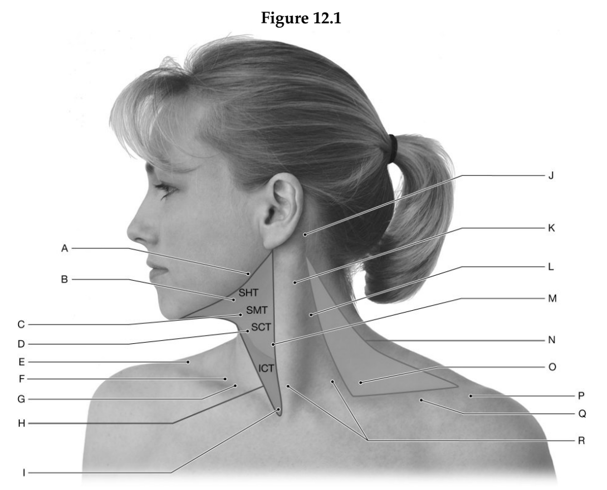A heavyset middle-aged insurance salesman, who doesn't exercise often, accepts his friend's invitation to a pickup basketball game. When attempting a jump shot, he falls to the ground in pain, grasping at the calf of his leg. There is an enormous bulge in his leg immediately below the popliteal fossa, and he is unable to plantar flex that foot. Most likely he has injured his __________ and the bulge is __________.
A. quadriceps tendon; his rectus femoris
B. calcaneal tendon; his triceps surae
C. patellar ligament; his fibularis longus
D. tibia; a previously undetected bone tumor
E. hamstrings; a large hematoma (blood clot)
B. calcaneal tendon; his triceps surae
You might also like to view...
Using the figure above, identify the labeled part.

1. Label A: ______________________________
2. Label B: ______________________________
3. Label C: ______________________________
4. Label D: ______________________________
5. Label E: ______________________________
6. Label F: ______________________________
7. Label G: ______________________________
8. Label H: ______________________________
9. Label I: ______________________________
10. Label J: ______________________________
11. Label K: ______________________________
12. Label L: ______________________________
13. Label M: ______________________________
14. Label N: ______________________________
15. Label O: ______________________________
16. Label P: ______________________________
17. Label Q: ______________________________
18. Label R: ______________________________
When the heart is not ejecting blood into the arterial system, the pressure in the arteries falls to zero as blood drains off into the rest of the vasculature
Indicate whether the statement is true or false
Which of the following decreases the rate of depolarization in the heart?
A) norepinephrine B) acetylcholine C) epinephrine D) epinephrine and norepinephrine E) acetylcholine, epinephrine and norepinephrine
What six basic steps are involved in the process of hearing?
What will be an ideal response?